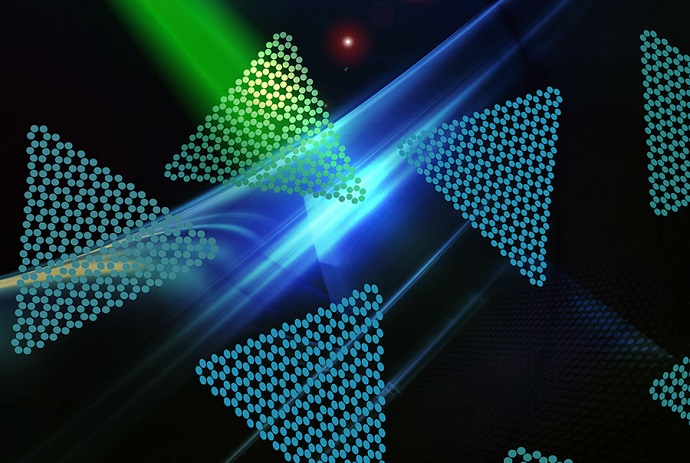27 Oct 2015
A team of UTS researchers has made a major breakthrough that could pave the way for the next generation of quantum communications.
The team, from the Materials and Technology for Energy Efficiency Research Strength at UTS Science, has found a material that emits a single pulse of a quantum light on demand at room temperature, removing one of the barriers to extremely fast and secure information processing.
Until now, room-temperature quantum emitters have only been observed in three-dimensional materials such as diamonds that hinder integration of these components in chips and commercial devices. The world is therefore in a race to find quantum light sources in atomically thin materials such as graphene – the famous single layer of carbon atoms.
"This material – layered hexagonal boron nitride (boron and nitrogen atoms that are arranged in a honeycomb structure) – is rather unique," Associate Professor Mike Ford said. "It is atomically thin and is traditionally used as a lubricant; however upon careful processing it can emit quantised pulses of light – single photons that can carry information.
"That’s important because one of the big goals is to make optical computer chips that can operate based on light rather than electrons, therefore operating much faster with less heat generation."
The single photon sources were discovered by Trong Toan Tran, Kerem Bray, Mike Ford, Milos Toth and Igor Aharonovich from UTS Science, whose findings have just been published in the prestigious journal Nature Nanotechnology.
Associate Professor Igor Aharonovich said the single photon sources are brighter than any other others currently available, and are promising enablers for absolutely secure communications and quantum computation.
"You can create very secure communication systems using single photons," explained Associate Professor Igor Aharonovich. "Each photon can be employed as a qubit (quantum bit, similarly to standard electronic bits), but because one cannot eavesdrop on single photons, the information is secure."
PhD candidate Trong Toan Tran said the results demonstrate the unprecedented potential of hexagonal boron nitride for large-scale nanophotonics and quantum information processing devices.
"This material is very easy to fabricate," he said. "It’s a much more viable option because it can be used at room temperature; it’s cheap, sustainable and is available in large quantities.
"Ultimately we want to build a 'plug and play' device that can generate single photons on demand, which will be used as a first prototype source for scalable quantum technologies that will pave the way to quantum computing with hexagonal boron nitride," he said.
The work was supported in part by an Australian Research Council (ARC) Discovery Project grant, an ARC Discovery Early Career Researcher Award, FEI Company and by resources provided by the Pawsey Supercomputing Centre.
Byline:
Rebecca Gallegos













